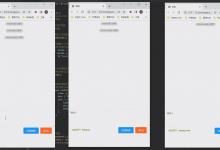
本篇文章,从Spring1.x到Spring 5.x的迭代中,站在现在的角度去思考Spring注解驱动的发展过程,这将有助于我们更好的理解Spring中的注解设计。
Spring Framework 1.x
在SpringFramework1.x时代,其中在1.2.0是这个时代的分水岭,当时Java5刚刚发布,业界正兴起了使用Annotation的技术风,Spring Framework自然也提供了支持,比如当时已经支持了@Transactional等注解,但是这个时候,XML配置方式还是唯一选择。
-
在xml中添加Bean的声明
<bean name="testService" class="com.gupaoedu.controller.TestService"/>
-
测试
public class XmlMain {public static void main(String[] args) {ApplicationContext context=new FileSystemXmlApplicationContext("classpath:applicationContext.xml");TestService testService=(TestService)context.getBean("testService");System.out.println(testService);}}
Spring Framework 2.x
Spring Framework2.x时代,2.0版本在Annotation中添加了@Required、@Repository以及AOP相关的@Aspect等注解,同时也提升了XML配置能力,也就是可扩展的XML,比如Dubbo这样的开源框架就是基于Spring XML的扩展来完美的集成Spring,从而降低了Dubbo使用的门槛。
在2.x时代,2.5版本也是这个时代的分水岭, 它引入了一些很核心的Annotation
- Autowired 依赖注入
- @Qualifier 依赖查找
- @Component、@Service 组件声明
- @Controller、@RequestMappring等spring mvc的注解
尽管Spring 2.x时代提供了不少的注解,但是仍然没有脱离XML配置驱动,比如https://www.cnblogs.com/mic112/p/context:annotation-config https://www.cnblogs.com/mic112/p/context:componet-scan , 前者的职责是注册Annotation处理器,后者是负责扫描classpath下指定包路径下被Spring模式注解标注的类,将他们注册成为Spring Bean
-
在applicationContext.xml中定义https://www.cnblogs.com/mic112/p/context:componet-scan
<https://www.cnblogs.com/mic112/p/context:component-scan base-package="com.gupaoedu.controller"/>
-
添加注解声明
@Servicepublic class TestService {} -
测试类
public class XmlMain {public static void main(String[] args) {ApplicationContext context=new FileSystemXmlApplicationContext("classpath:applicationContext.xml");TestService testService=(TestService)context.getBean("testService");System.out.println(testService);}}
Spring Framework 3.x
Spring Framework3.0是一个里程碑式的时代,他的功能特性开始出现了非常大的扩展,比如全面拥抱Java5、以及Spring Annotation。更重要的是,它提供了配置类注解@Configuration, 他出现的首要任务就是取代XML配置方式,不过比较遗憾的是,Spring Framework3.0还没有引入替换XML元素https://www.cnblogs.com/mic112/p/context:componet-scan的注解,而是选择了一个过渡方式@ImportResource。
@ImportResource允许导入遗留的XML配置文件,比如
@ImportResource("classpath:/META-INF/spring/other.xml")@Configurationpublic class SpringConfiguration{}
并且在Spring Frameworkd提供了AnnotationConfigApplicationContext注册,用来注册@Configuration Class,通过解析Configuration类来进行装配。
在3.1版本中,引入了@ComponentScan,替换了XML元素https://www.cnblogs.com/mic112/p/Context:component-scan , 这个注解虽然是一个小的升级,但是对于spring 来说在注解驱动领域却是一个很大的进步,至此也体现了Spring 的无配置化支持。
Configuration配置演示
-
Configuration这个注解大家应该有用过,它是JavaConfig形式的基于Spring IOC容器的配置类使用的一种注解。因为SpringBoot本质上就是一个spring应用,所以通过这个注解来加载IOC容器的配置是很正常的。所以在启动类里面标注了@Configuration,意味着它其实也是一个IoC容器的配置类。
举个非常简单的例子
-
测试代码
ConfigurationDemo@Configurationpublic class ConfigurationDemo {@Beanpublic DemoClass demoClass(){return new DemoClass();}}DemoClasspublic class DemoClass {public void say(){System.out.println("say: Hello Mic");}}ConfigurationMainpublic class ConfigurationMain {public static void main(String[] args) {ApplicationContext applicationContext=new AnnotationConfigApplicationContext(ConfigurationDemo.class);DemoClass demoClass=applicationContext.getBean(DemoClass.class);demoClass.say();}}
Component-scan
ComponentScan这个注解是大家接触得最多的了,相当于xml配置文件中的https://www.cnblogs.com/mic112/p/context:component-scan。 它的主要作用就是扫描指定路径下的标识了需要装配的类,自动装配到spring的Ioc容器中。
标识需要装配的类的形式主要是:@Component、@Repository、@Service、@Controller这类的注解标识的类。
-
在spring-mvc这个工程中,创建一个单独的包路径,并创建一个OtherServcie。
@Servicepublic class OtherService {} -
在Controller中,注入OtherService的实例,这个时候访问这个接口,会报错,提示没有otherService这个实例。
@RestControllerpublic class HelloController {@AutowiredOtherService otherService;@GetMapping("/hello")public String hello(){System.out.println(otherService);return "Hello Gupaoedu";}} -
添加conpoment-scan注解,再次访问,错误解决。
@ComponentScan("com.gupaoedu")
ComponentScan默认会扫描当前package下的的所有加了相关注解标识的类到IoC容器中;
Import注解
import注解是什么意思呢? 联想到xml形式下有一个
<import resource/>
形式的注解,就明白它的作用了。import就是把多个分来的容器配置合并在一个配置中。在JavaConfig中所表达的意义是一样的。
-
创建一个包,并在里面添加一个单独的configuration
public class DefaultBean {}@Configurationpublic class SpringConfig {@Beanpublic DefaultBean defaultBean(){return new DefaultBean();}} -
此时运行测试方法,
public class MainDemo {public static void main(String[] args) {ApplicationContext ac=new AnnotationConfigApplicationContext(SpringConfig.class);String[] defNames=ac.getBeanDefinitionNames();for(String name:defNames){System.out.println(name);}}} -
在另外一个包路径下在创建一个配置类。此时再次运行前面的测试方法,打印OtherBean实例时,这个时候会报错,提示没有该实例
public class OtherBean {}@Configurationpublic class OtherConfig {@Beanpublic OtherBean otherBean(){return new OtherBean();}} -
修改springConfig,把另外一个配置导入过来
@Import(OtherConfig.class)@Configurationpublic class SpringConfig {@Beanpublic DefaultBean defaultBean(){return new DefaultBean();}} -
再次运行测试方法,即可看到对象实例的输出。
至此,我们已经了解了Spring Framework在注解驱动时代,完全替代XML的解决方案。至此,Spring团队就此止步了吗?你们太单纯了。虽然无配置化能够减少配置的维护带来的困扰,但是,还是会存在很对第三方组建的基础配置声明。同样很繁琐,所以Spring 退出了@Enable模块驱动。这个特性的作用是把相同职责的功能组件以模块化的方式来装配,更进一步简化了Spring Bean的配置。
Enable模块驱动
我们通过spring提供的定时任务机制来实现一个定时任务的功能,分别拿演示在使用Enable注解和没使用Enable的区别。让大家感受一些Enable注解的作用。
使用EnableScheduing之前
-
在applicationContext.xml中添加定时调度的配置
<?xml version="1.0" encoding="UTF-8"?><beans xmlns="http://www.springframework.org/schema/beans"xmlns:xsi="http://www.w3.org/2001/XMLSchema-instance"xmlns:task="http://www.springframework.org/schema/task"xmlns:context="http://www.springframework.org/schema/context"xsi:schemaLocation="http://www.springframework.org/schema/beanshttp://www.springframework.org/schema/beans/spring-beans-3.2.xsdhttp://www.springframework.org/schema/taskhttp://www.springframework.org/schema/task/spring-task-3.2.xsd http://www.springframework.org/schema/context https://www.springframework.org/schema/context/spring-context.xsd"><https://www.cnblogs.com/mic112/p/context:component-scan base-package="com.gupaoedu.controller"/><!--AnnotationDrivenBeanDefinitionParser--><task:annotation-driven scheduler="scheduler"/> <!-- 定时器开关--><task:scheduler id="scheduler" pool-size="5"/></beans>
-
编写任务处理类
@Servicepublic class TaskService {@Scheduled(fixedRate = 5000) //通过@Scheduled声明该方法是计划任务,使用fixedRate属性每隔固定时间执行public void reportCurrentTime(){System.out.println("每隔5秒执行一次 "+new Date());}} -
编写测试类
public class TestTask {public static void main(String[] args) {ApplicationContext applicationContext=new FileSystemXmlApplicationContext("classpath:applicationContext.xml");}}
使用EnableScheding之后
-
创建一个配置类
@Configuration@ComponentScan("com.gupaoedu.controller")@EnableSchedulingpublic class SpringConfig {} -
创建一个service
@Servicepublic class TaskService {@Scheduled(fixedRate = 5000) //通过@Scheduled声明该方法是计划任务,使用fixedRate属性每隔固定时间执行public void reportCurrentTime(){System.out.println("每隔5秒执行一次 "+new Date());}} -
创建一个main方法
public class TaskMain {public static void main(String[] args) {ApplicationContext context=new AnnotationConfigApplicationContext(SpringConfig.class);}} -
启动服务即可实现定时调度的功能。
思考使用Enable省略了哪个步骤呢?
首先我们看没使用Enable的代码,它里面会有一个
<task:annotation-driven scheduler="scheduler"/>
这个scheduler是一个注解驱动,会被AnnotationDrivenBeanDefinitionParser 这个解析器进行解析。
在parse方法中,会有如下代码的定义
builder = BeanDefinitionBuilder.genericBeanDefinition("org.springframework.scheduling.annotation.ScheduledAnnotationBeanPostProcessor");builder.getRawBeanDefinition().setSource(source);
这个类是用来解析@Scheduled注解的。
ok,我们再看一下EnableScheduling注解,我们可以看到,它会自动注册一个ScheduledAnnotationBeanPostProcessor的bean。所以,通过这个例子,就是想表达Enable注解的作用,它可以帮我们省略一些第三方模块的bean的声明的配置。
public class SchedulingConfiguration {public SchedulingConfiguration() {}@Bean(name = {"org.springframework.context.annotation.internalScheduledAnnotationProcessor"})@Role(2)public ScheduledAnnotationBeanPostProcessor scheduledAnnotationProcessor() {return new ScheduledAnnotationBeanPostProcessor();}}
Spring Framework 4.x
Spring 4.x版本,是注解的完善时代,它主要是提升条件装配能力,引入了@Conditional注解,通过自定义Condition实现配合,弥补了之前版本条件化配置的短板。
简单来说,Conditional提供了一个Bean的装载条件判断,也就是说如果这个条件不满足,那么通过@Bean声明的对象,不会被自动装载进来,具体是怎么用的呢?,先来简单带大家了解一下它的基本使用。
Conditional的概述
@Conditional是一个注解,我们观察一下这个注解的声明, 它可以接收一个Condition的数组。
@Target({ElementType.TYPE, ElementType.METHOD})@Retention(RetentionPolicy.RUNTIME)@Documentedpublic @interface Conditional {Class<? extends Condition>[] value();}
@FunctionalInterfacepublic interface Condition {boolean matches(ConditionContext var1, AnnotatedTypeMetadata var2);}
这个Condition是一个函数式接口,提供了一个matchers的方法,简单来说,它就是提供了一个匹配的判断规则,返回true表示可以注入bean,返回false表示不能注入。
Conditional的实战
-
自定义个一个Condition,逻辑比较简单,如果当前操作系统是Windows,则返回true,否则返回false
public class GpCondition implements Condition{@Overridepublic boolean matches(ConditionContext conditionContext, AnnotatedTypeMetadataannotatedTypeMetadata) {//此处进行条件判断,如果返回 true,表示需要加载该配置类或者 Bean//否则,表示不加载String os=conditionContext.getEnvironment().getProperty("os.name");if(os.contains("Windows")){return true;}return false;}} -
创建一个配置类,装载一个 BeanClass
@Configurationpublic class ConditionConfig {@Bean@Conditional(GpCondition.class)public BeanClass beanClass(){return new BeanClass();}} -
在 BeanClass 的 bean 声明方法中增加@Conditional(GpCondition.class),其中具体的条件是我们自定义的 GpCondition 类。上述代码所表达的意思是,如果 GpCondition 类中的 matchs 返回 true,则将 BeanClass 装载到 Spring IoC 容器中
-
运行测试方法
public class ConditionMain {public static void main(String[] args) {AnnotationConfigApplicationContext context=newAnnotationConfigApplicationContext(ConditionConfig.class);BeanClass beanClass=context.getBean(BeanClass.class);System.out.println(beanClass);}}
总结
经过对Spring注解驱动的整体分析,不难发现,我们如今之所以能够非常方便的基于注解来完成Spring中大量的功能,得益于Spring团队不断解决用户痛点而做的各种努力。而Spring Boot的自动装配机制,也是在Spring 注解驱动的基础上演化而来,在后续的内容中,我会专门分析Spring Boot的自动装配机制。
版权声明:本博客所有文章除特别声明外,均采用 CC BY-NC-SA 4.0 许可协议。转载请注明来自
Mic带你学架构
!如果本篇文章对您有帮助,还请帮忙点个关注和赞,您的坚持是我不断创作的动力。欢迎关注「跟着Mic学架构」公众号公众号获取更多技术干货!

 爱站程序员基地
爱站程序员基地


